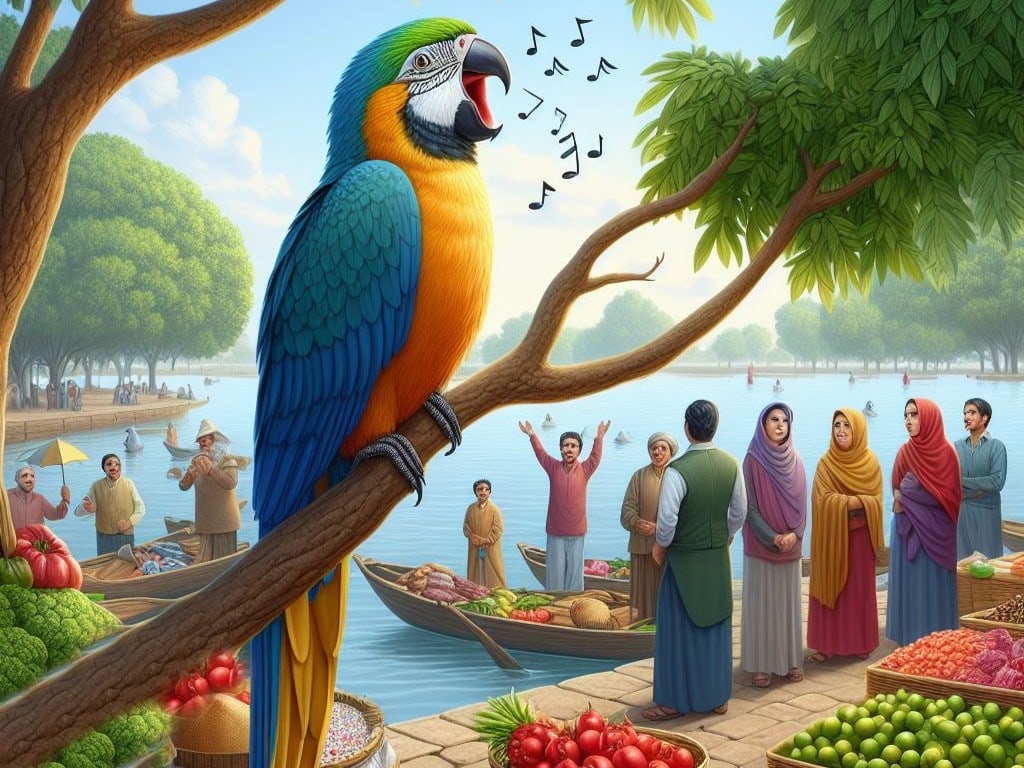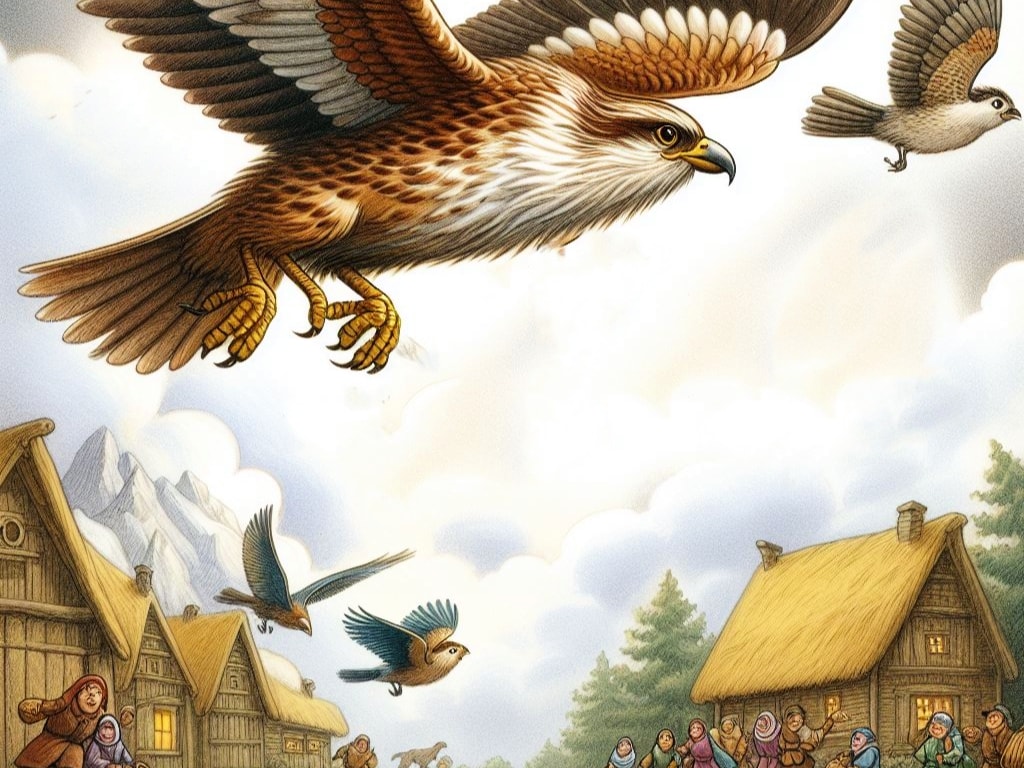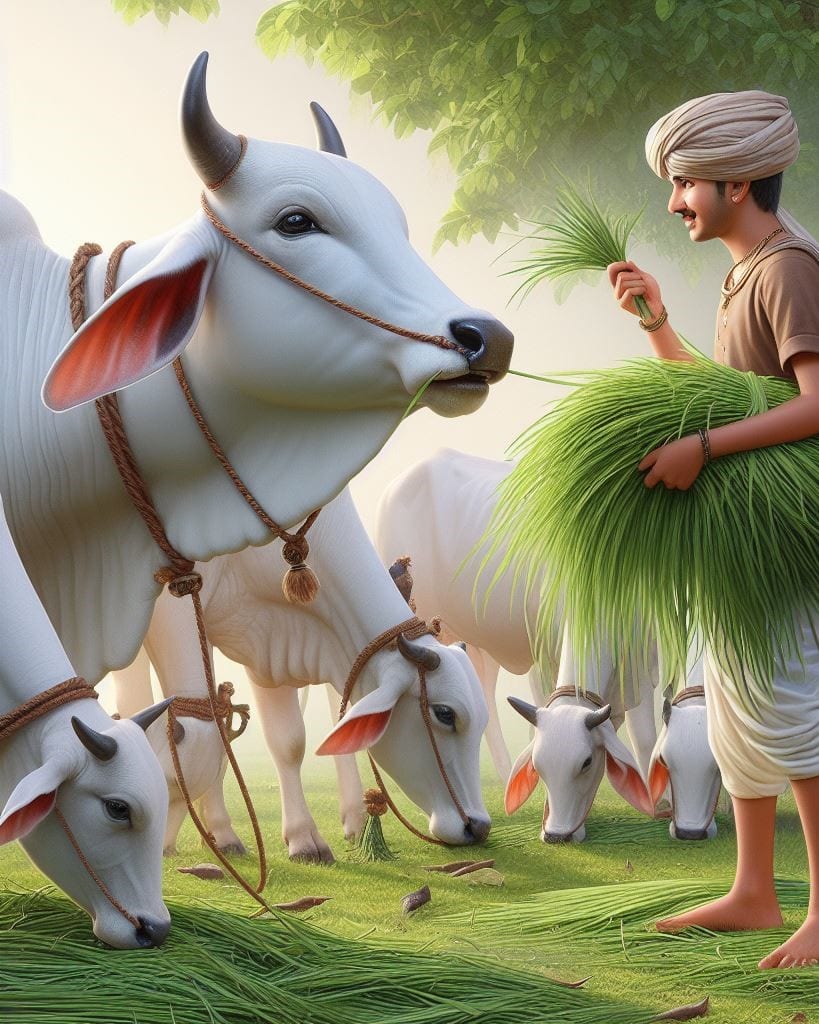Introduction
In this series, I will tell short fiction stories for middle school students. These stories aim to engage and captivate young readers, while also providing valuable life lessons.
Although they are tailored for mid-school students, readers of all ages can still find enjoyment and value in these tales.
The Generous Mango Tree
In a serene village named Sundarpur, nestled amidst rolling hills and surrounded by lush fields, there stood a magnificent mango tree named Amar. Amar was no ordinary tree; it was known throughout the village for its generous heart and bountiful mangoes.
Every summer, when the mangoes ripened to perfection, Amar would bear its sweet fruit. What made Amar truly special was its unwavering dedication to the children of the village.
Each day, without fail, Amar would offer ten of its finest mangoes to the young ones who eagerly gathered beneath its broad, leafy canopy.

The children cherished this daily ritual. With smiles on their faces and laughter in their hearts, they would approach Amar, their small hands reaching up to pluck the delicious mangoes. And Amar, with its branches bending low with the weight of ripe mangoes, shared its bounty with love.
As the years passed, Amar grew older, and the number of mangoes it bore dwindled. The children, now grown into responsible young adults, noticed the change.
Yet, their love for Amar remained unchanged. They came together and decided to care for the tree that had given them so much.
They watered its roots, trimmed its branches, and ensured it received the care it deserved. They understood that Amar had taught them a lesson far more valuable than just the sweetness of mangoes. It had taught them the beauty of selfless giving.
With the care of the young villagers, Amar flourished once again. Its branches regained their strength, and its mangoes grew even sweeter. The village, too, flourished in the spirit of kindness and generosity that Amar had inspired.
And so, in the village of Sundarpur, the legend of Amar, the generous mango tree, lived on. It became a symbol of selflessness, reminding everyone that true happiness is found in giving, and that the sweetest fruit of all is the fruit of a generous heart.
The Wise King and the Ants
In a bustling kingdom nestled between mighty mountains, there lived a king named Raja Vikram. He was known far and wide for his wisdom and his deep connection with the natural world.
One sunny morning, as he strolled through his magnificent garden, he noticed a group of ants working diligently to build their tiny anthill.
Raja Vikram observed the ants closely. Each ant tirelessly carried a small pebble and placed it in a neat pile.
It was a simple task, but when the king counted, there were not just a few pebbles; there were hundreds, perhaps even thousands of them. Intrigued, the king called his councilors to witness the ants’ remarkable teamwork.

As they watched, one of the councilors remarked, “Your Majesty, these tiny creatures are working together with such dedication, despite the smallness of their individual contributions.”
The king nodded, his eyes filled with understanding. He realized that the unity and cooperation of the ants were teaching a profound lesson. The next day, he summoned his subjects and shared the wisdom he had gained from the anthill.
“Dear citizens,” he began, “Just as these ants work together to build their home, let us remember that even the smallest of efforts, when united, can achieve great things.”
Inspired by their wise king, the people of the kingdom started working together with renewed enthusiasm. They built roads, bridges, and schools, transforming their kingdom into a prosperous and harmonious land.
Over time, the kingdom of Raja Vikram became a shining example of unity and teamwork, all because of the lesson learned from the diligent ants.
And so, the wise king and the tiny ants taught everyone that no effort is too small, and when people come together in harmony, they can accomplish wonders beyond their imagination. The kingdom thrived not only in wealth but also in the bonds of togetherness that grew stronger each day.
The Talking Parrot’s Lesson
In a bustling market town called Chandrapur, there lived a parrot named Rani. Rani wasn’t an ordinary parrot; she had a unique gift—she could speak ten languages fluently. Her vibrant feathers and the melodies of her voice drew crowds from all around.
Every day, people gathered in the market square to hear Rani’s enchanting stories, songs, and witty conversations in various languages. She spoke to traders, travelers, and children, making everyone feel welcome in Chandrapur.
But what truly set Rani apart was not just her ability to speak multiple languages; it was how she used her gift. Rani always used her linguistic talents to spread love and laughter. She would tell tales that inspired kindness, sang songs that celebrated friendship, and shared jokes that filled the air with mirth.

One day, a wealthy merchant from a distant land arrived in Chandrapur. He heard about Rani’s extraordinary talent and offered a substantial sum to buy her.
The merchant believed that Rani could bring him even greater wealth and fame. However, the townspeople were deeply attached to Rani and refused to part with their beloved parrot.
When Rani learned of the merchant’s offer, she addressed the townspeople, “Dear friends, I am grateful for your love and support.
But remember, my true gift is not the ability to speak many languages; it is the power to bring happiness to all of you. Money cannot buy the joy we share.”
The townspeople unanimously decided that Rani would stay in Chandrapur, where her presence brought joy to young and old alike. The merchant left, realizing that there were things far more valuable than riches.
Rani continued to enchant the market square with her stories, songs, and laughter. Chandrapur became known not only for its bustling market but also for the warmth and happiness that radiated from it.
The lesson of Rani, the talking parrot, echoed through the town’s cobblestone streets: true wealth lies not in what you possess but in the love and happiness you bring to others. Chandrapur thrived as a place where people embraced the richness of kindness, gratitude, and the simple joy of sharing laughter with friends and strangers alike.
The Little Sparrow’s Determination
In the heart of a vibrant village named Kurukshetra, there lived a tiny sparrow named Chiku. Chiku was unlike any other bird in the village. While her friends contented themselves with flying around the village, she had a lofty ambition—to soar higher than anyone had ever imagined.
Chiku observed the eagles in the sky, how they glided with grace and touched the heavens. She decided that she wanted to be like them, to touch the clouds and see the world from above.
With unwavering determination, Chiku practiced tirelessly. She would flutter her wings vigorously, trying to lift herself off the ground. Her friends watched her efforts, puzzled by her persistence. They believed that sparrows were meant to stay close to the earth.
But Chiku had a dream, a dream that stretched her wings and pushed her limits. Every day, she climbed to the highest branches of the tallest trees and leaped into the air. Though she often fell back to the ground, she never gave up.

One sunny morning, as the golden sun bathed Kurukshetra in its warm embrace, something extraordinary happened. Chiku spread her wings wide, summoned all her strength, and soared into the sky. The villagers watched in amazement as the little sparrow rose higher and higher, her tiny form a speck against the boundless blue.
Chiku had achieved her dream. She soared with the eagles, touching the clouds and witnessing the world from a breathtaking perspective. Her friends below watched in awe, inspired by her determination and the heights she had reached.
Chiku’s journey reminded everyone that determination knows no bounds. It was not about being the same as others but about believing in oneself and striving to reach one’s aspirations. Chiku returned to Kurukshetra, her heart full of joy, and shared her adventures with her friends.
From that day forward, the village of Kurukshetra celebrated Chiku’s spirit of determination, teaching everyone, young and old, that no dream was too high to achieve if they had the courage to try. The little sparrow had shown them that with determination, they could reach for the sky and touch their dreams.
The Lost Kite and the Kind Stranger
In a lively neighborhood, nestled between the bustling city streets, there lived a boy named Arjun. Arjun was known for his love of flying kites. His collection of colorful kites filled the sky every weekend, as he and his friends engaged in thrilling kite battles.
One sunny Sunday, as Arjun and his friends flew their kites, disaster struck. Arjun’s favorite kite, a beautifully designed masterpiece, broke free from his grip and soared high into the sky, carried away by a strong gust of wind. Arjun’s heart sank as he watched his beloved kite disappear into the distance.

He spent the entire day searching, but his cherished kite remained out of reach. That evening, disheartened, he returned home with tears in his eyes.
His mother, Radha, noticed his sadness and tried to comfort him. She reminded him that things could always be replaced but that his safety and happiness were more important.
But Arjun couldn’t shake off the disappointment. He went to bed with a heavy heart, unable to sleep. Little did he know that the story of his lost kite was far from over.
The next morning, Arjun received a surprise. A kind stranger, Mr. Raghav, had found his kite tangled in the branches of a tall tree near the neighborhood park. He had spent hours carefully untangling it and had recognized the kite from Arjun’s name written on it.
Mr. Raghav sought out Arjun’s house and returned the kite to the astonished boy. Arjun was overjoyed, and his eyes sparkled with gratitude as he thanked the stranger profusely.
Mr. Raghav simply smiled and said, “It’s important to help each other when we can. Your happiness is all the thanks I need.”
Arjun’s lost kite had not only been found but had also brought with it a lesson that touched the entire neighborhood. People began to look out for one another, offer help when needed, and share kindness freely.
The story of Arjun’s lost kite and the kindness of a stranger became a heartwarming tale that echoed through the streets of their neighborhood. It was a reminder that in times of need, a helping hand and a kind heart could bring unexpected joy and strengthen the bonds of a community.
The Farmer and the Talking Cow
In a peaceful village named Gopalpur, nestled amidst rolling hills and lush green fields, there lived a humble farmer named Hari. Hari was known far and wide for his dedication to his land and his unshakeable kindness towards all living beings.
One bright morning, as Hari was tending to his cows, he noticed something extraordinary. One of his cows, a gentle creature named Ganga, seemed to be speaking. It wasn’t mere mooing; Ganga was expressing herself in clear, human-like words.

Hari couldn’t believe his ears. He listened attentively as Ganga shared wisdom and life lessons, speaking with a grace and wisdom that was truly remarkable. Ganga had the ability to talk, and she was eager to share her knowledge.
Over the days that followed, Ganga continued to speak, and Hari listened and learned. She shared ten valuable life lessons, from the importance of kindness to the beauty of gratitude. Hari absorbed her teachings like a parched field soaking up the rain.
Hari’s newfound wisdom didn’t remain confined to his farm. He shared Ganga’s teachings with his family and the villagers. They marveled at the profound wisdom that flowed from the talking cow, and they realized that the lessons Ganga imparted were invaluable.
One of Ganga’s most important teachings was about the importance of sharing and caring for those in need. Inspired by her words, the villagers started a community garden, where they grew vegetables to share with those less fortunate. They also created a small library, inspired by Ganga’s love for knowledge.
Word of Ganga’s wisdom spread beyond Gopalpur, and people from neighboring villages came to listen to her teachings. The talking cow became a symbol of kindness, wisdom, and community spirit.
As the years passed, Ganga continued to share her wisdom with Hari and the villagers. She never stopped speaking, reminding everyone that knowledge was a treasure to be cherished and shared.
The story of Hari and the talking cow, Ganga, became legendary, not only for the extraordinary gift of speech but for the profound lessons she taught. It was a tale of wisdom, kindness, and the incredible power of sharing knowledge to enrich the lives of all.
The Magical Lamp’s Lesson
In the bustling city of Jaipur, where the streets were lined with vibrant markets and the air was filled with the aroma of spices, there lived a young boy named Raj. Raj had always been fascinated by tales of magic and enchantment, especially those involving magical lamps and genies.
One sunny day, while exploring a dusty attic in his ancestral home, Raj stumbled upon an old, tarnished lamp. With curiosity in his eyes, he gave it a rub, and to his astonishment, a swirling cloud of smoke emerged from the lamp, coalescing into the form of a genie.

The genie, with a twinkle in his eye, spoke, ” Hey dear, I am the genie, and I am here to grant you ten wishes, whatever your heart desires.”
Raj couldn’t believe his luck. He thought of all the wealth and riches he could wish for, but then he remembered a lesson his grandmother had taught him about the importance of sharing.
“I have a wish,” Raj said to the genie. “I wish for a feast to be prepared and shared with the hungry people in our city.”
In an instant, the genie granted his wish, and a magnificent feast appeared before Raj. He gathered the food and, with the help of his family, shared it with the less fortunate in their neighborhood.
As Raj continued to make selfless wishes, he noticed something remarkable. Each time he wished for something to benefit others, he felt a deep sense of happiness and fulfillment. He realized that true wealth lay not in possessions but in the joy of giving and making a difference in the lives of others.
Word of Raj’s selflessness spread throughout Jaipur, and people came to witness the magic of the lamp. Raj’s wishes transformed the city. Parks were built, schools were established, and shelters were opened for the homeless.
The genie, pleased with Raj’s choices, smiled and said, “You have learned the most valuable lesson, young Raj. True wealth is not in riches but in the kindness and compassion you show to others.”
With that, the genie disappeared back into the lamp, which Raj decided to keep as a reminder of the lesson he had learned.
The story of Raj and the magical lamp became a fable in Jaipur, reminding everyone that the greatest magic of all was the magic of kindness and the joy that came from sharing with those in need.
Raj’s heart was forever enriched, and he continued to make selfless wishes, ensuring that the city of Jaipur remained a place of compassion and generosity for generations to come.
About the Author

Ashish Salunke
Ashish is a skilled biographer and content writer specialized in crafting captivating historical narratives. Through HistoricNation, he skillfully merged his IT expertise with the art of storytelling.
